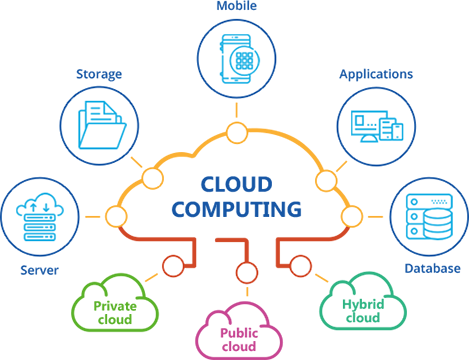Elevate Your Business with LinkDaddy Cloud Services: Unleashing Universal Cloud Service Potential
Elevate Your Business with LinkDaddy Cloud Services: Unleashing Universal Cloud Service Potential
Blog Article
Simplify Your Facilities With Cloud Services
As businesses browse the ever-evolving landscape of modern technology and information administration, the function of cloud solutions in streamlining framework has actually ended up being increasingly popular. Just how can businesses successfully navigate this shift and genuinely open the potential of cloud services for simplifying their facilities?
Advantages of Cloud Services
Cloud services use a streamlined method to handling IT framework, providing services with adaptability, scalability, and cost-efficiency. Among the essential benefits of cloud solutions is the scalability they supply. Businesses can easily scale their resources up or down based on demand, guaranteeing they just pay for what they use. This versatility is particularly helpful for companies with changing demands or those experiencing development.
Additionally, cloud solutions remove the demand for services to purchase costly hardware and software program. This cost-efficiency is a substantial benefit, particularly for small to medium-sized enterprises looking to minimize upfront costs. By utilizing cloud solutions, organizations can access premium IT resources without the significant price related to typical infrastructure configurations.
In addition, cloud solutions provide organizations with the adaptability to access their data and applications from anywhere with a net link. This degree of availability improves partnership among teams, makes it possible for remote job, and increases overall efficiency. The flexibility provided by cloud services empowers services to adapt promptly to altering market problems and client needs.
Price Financial Savings and Scalability
In enhancement to the operational advantages highlighted previously, the combination of cloud solutions right into a business's framework yields considerable cost savings and boosted scalability. Cloud services use a pay-as-you-go model, enabling businesses to range resources up or down based on present needs, consequently staying clear of the prices related to keeping excess ability. This versatility enables business to adapt rapidly to changing demands without incurring unnecessary expenditures.
Moreover, cloud services eliminate the requirement for upfront investments in software and hardware, reducing capital investment. Operating budget are likewise lessened as firms no much longer require to take care of and keep physical servers, causing reduced power consumption and IT staffing costs. Additionally, cloud services supply automated updates and upkeep, making certain that the infrastructure remains protected and up-to-date without requiring manual interventions.
Improved Security Measures
Implementing rigid protection measures is extremely important when incorporating cloud solutions right into a company's facilities to guard sensitive data and ensure conformity with market laws. Cloud service carriers supply improved security attributes such as information security, firewall software security, and multi-factor authentication to alleviate cybersecurity dangers.
In addition, routine safety audits and conformity analyses assist make sure and determine susceptabilities adherence to sector standards. Companies can likewise gain from functions like automatic protection updates and real-time danger his explanation surveillance offered by cloud provider. By prioritizing security measures and staying aggressive in addressing This Site prospective threats, businesses can with confidence take advantage of cloud solutions while protecting their important data from unapproved access or violations.
Transitioning to Cloud Infrastructure
To efficiently integrate cloud solutions right into a business's infrastructure, a structured strategy that attends to the shift in the direction of cloud-based solutions is vital. Transitioning to shadow infrastructure entails careful preparation and implementation to make sure a smooth migration procedure. The primary step is to examine the current infrastructure and identify which applications and systems appropriate for migration to the cloud. This assessment ought to consider elements such as data level of sensitivity, compliance requirements, and performance demands.
As soon as the evaluation is complete, a movement method should be established. This method must outline the timeline, sources, and duties for relocating each element to the cloud. It is important to communicate this plan clearly to all stakeholders to guarantee placement and lessen disruptions throughout the change.
Throughout the migration testing, process and tracking are essential to recognize and resolve any kind of problems immediately. Routine checkpoints ought to be established to track progress and make essential changes. In addition, training for staff members on utilizing cloud services ought to be offered to guarantee an effective change and take full advantage of the advantages of the brand-new facilities.
Finest Practices for Cloud Adoption
Effective adoption of cloud click here to find out more services rests on the tactical placement of company objectives with technological capabilities and organizational preparedness. To make sure a smooth change to the cloud, companies ought to start by performing an extensive evaluation of their current infrastructure and determining which work are best fit for cloud migration. It is vital to include vital stakeholders from different divisions in the decision-making procedure to acquire buy-in and attend to any worries early on.
One more ideal practice for cloud adoption is to focus on safety and conformity. Organizations has to carefully assess the protection measures offered by cloud provider and make sure that their information is secured according to industry criteria and governing demands. Implementing durable data security, gain access to controls, and regular safety audits can help minimize risks connected with cloud adoption.

Verdict

As companies browse the ever-evolving landscape of modern technology and information administration, the role of cloud solutions in simplifying infrastructure has actually become significantly prominent - universal cloud Service. How can organizations effectively navigate this shift and genuinely unlock the possibility of cloud services for simplifying their facilities?
Cloud solutions offer a streamlined technique to handling IT framework, providing services with scalability, versatility, and cost-efficiency. By using cloud solutions, companies can access high-grade IT sources without the large cost tag associated with typical framework setups.
To ensure a smooth transition to the cloud, companies need to begin by performing a comprehensive analysis of their current framework and recognizing which workloads are best fit for cloud migration.
Report this page